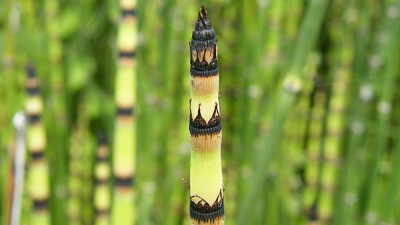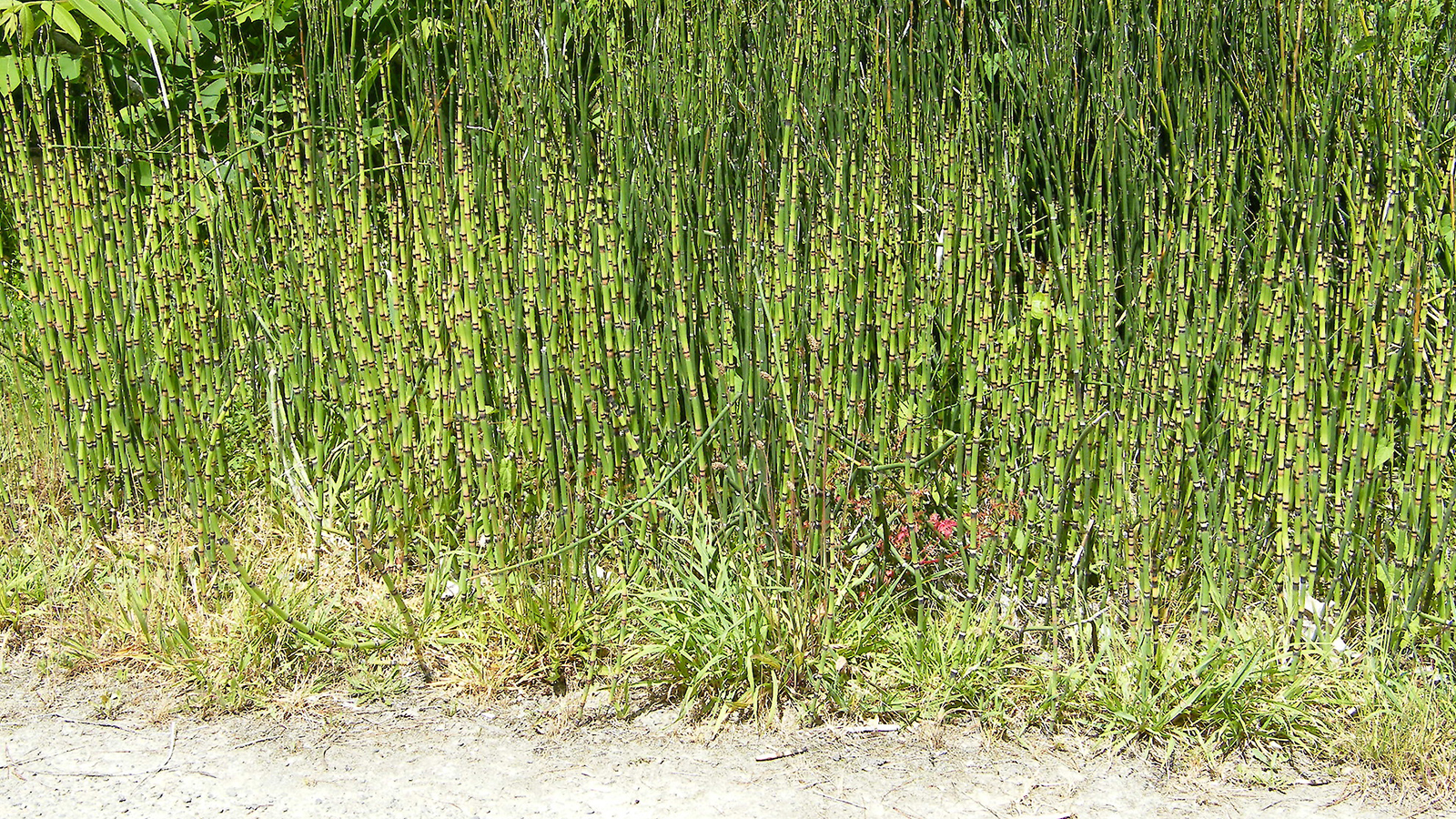| Management programme |
| Eradication. |
| Objectives |
| Reduce the level of infestation of rough horsetail within the Waikato region to zero density to prevent adverse effects and impact. |
| Impacts |
| Economic, biodiversity, water quantity/quality, social and cultural wellbeing |
Native to North America, Europe and northern Asia, rough horsetail is part of a “living fossil” species which has grown for over 100 million years. It was introduced to New Zealand as an ornamental plant, especially for aquatic habitats.

What does it look like?
Size
- Can grow up to 1.2m high.
Stems
- Stems are hollow.
- It does not produce flowers, instead, spores are concentrated at the tip of the stem in an asparagus like head.
Rhizomes
- Rhizomes can grow to 1m deep in the soil, making digging the plant out very tricky.
Similar plants
Field horsetail (Equisetum arvense) also has fertile stems that look asparagus-like, but they are shorter than ones produced by rough horsetail. Sterile stems of field horsetail resemble pine seedings.
Where is it found?
Prefers moist areas such as gravel areas and pond/lake margins but once it is well established, it will adapt to a wide range of conditions. It can even be found growing through the cracks in concrete.
Why is it a pest?
- Toxic to stock.
- Difficult to control as herbicide has difficulty penetrating the extensive rhizome system.
- Hard to dig out as all rhizome fragments need to be removed to prevent regrowth.
- Forms pure stands in a wide range of damp habitats, preventing the seedlings of native species from establishing.
- Encourages sedimentation as the plant forms dense stands and can block or alter water courses.
How does it spread?
Underground rhizomes are spread by movement of soil or through deliberate planting.
How do you get rid of it?
Rough horsetail is exceedingly difficult to control. Please do not attempt to control it. Let us know if you think you have seen this plant or have it on your property by calling 0800 800 401 to report it to your local biosecurity pest plant officer.
More information
Publications
The following publications are available for download or from Waikato Regional Council. Contact us to request a copy (freephone 0800 800 401).





